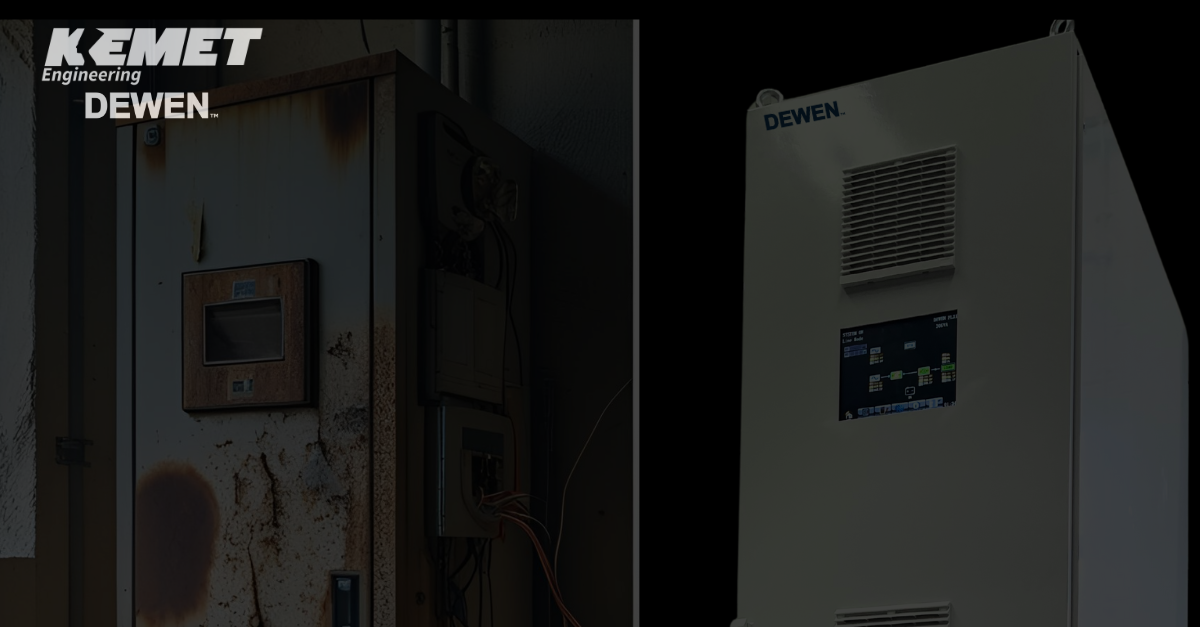
When engineers and procurement teams specify UPS systems, their attention often goes to power capacity, battery chemistry, or control software. But there’s one element that silently affects system longevity, maintenance costs, and reliability — and it’s often overlooked: the cabinet.
If you’ve ever faced premature UPS failures, unexpected maintenance visits, or corrosion-related shutdowns, chances are the issue didn’t start with the electronics — it started with the enclosure.
When the Cabinet Becomes the Cost
Let’s say your UPS is installed in a semi-outdoor plant room or a high-humidity site. On paper, it’s “indoors,” but in reality? There’s dust, water ingress from washdowns, or temperature swings from poor ventilation. Over time, that means:
- Internal condensation
- Corroded contacts
- Dust-shortened component life
- Early system degradation
All because the cabinet wasn’t designed for the real environment.
This is what we call the TCO trap — selecting a cheaper, lower-rated enclosure to save money upfront, only to pay for it repeatedly over the system’s lifecycle.
Not All IP Ratings Are Equal
Here’s a simplified way to understand IP ratings in the real world:
| IP Rating | Protection Level | Typical Use |
|---|---|---|
| IP20/IP30 | Basic dust protection | Clean indoor rooms |
| IP54 | Dust + splash resistance | Pump stations, utility rooms, field sites |
| IP65+ | Jet wash + total dust sealing | Washdown zones, marine, food plants |
IP54 is often the “smart middle” — offering enough protection for most challenging environments without the high costs or design constraints of IP65+ solutions.
IP54: The Smart Middle Ground
Why do so many infrastructure clients — from water utilities to telecom firms — select IP54?
Because it pays off in:
- 🔧 Fewer maintenance visits
- ⏳ Extended UPS lifespan
- 📉 Lower risk of downtime
- 💷 Long-term savings on parts, callouts, and labor
Studies across KEMET installations show that IP54-rated systems can reduce lifetime maintenance costs by up to 40%, simply by preventing ingress-related wear.
Think of it as a one-time investment that silently protects your OPEX year after year.
Before You Specify: Ask These 4 Questions
- What’s the true exposure level of this site — not just on paper, but in reality?
- How much does a maintenance call-out cost in time and budget?
- Is this site mission-critical? What’s the cost of downtime here?
- Am I under-protecting the system to save now — or over-protecting with overkill specs?
The answers usually point to one thing: IP54 makes sense for most industrial and utility deployments.
A Box That Thinks Ahead
At KEMET, we’ve seen firsthand how better protection translates into better performance. That’s why our DEWEN™ UPS systems are engineered with IP54-rated enclosures as a standard for outdoor and semi-industrial environments.
You’re not just buying a metal box — you’re buying time, reliability, and peace of mind.
✅ Ready to Make the Smart Investment?
We’ll help assess your application and match the right enclosure to your performance and budget goals — no over-spec, no under-protect.
Talk to our engineers about your site requirements, or download our free UPS Cabinet Selection Guide.
